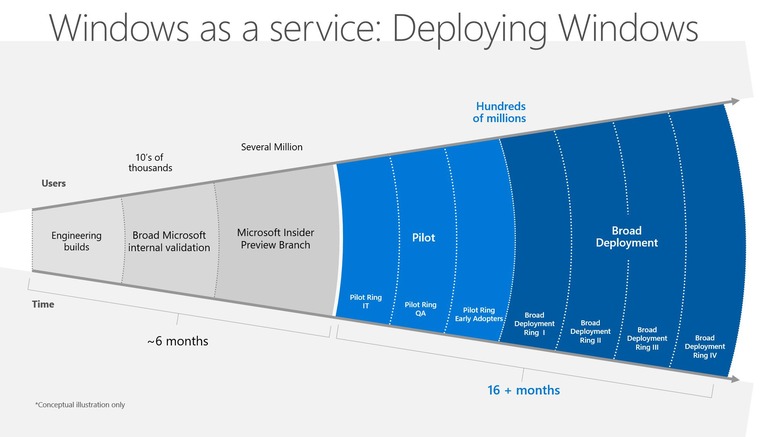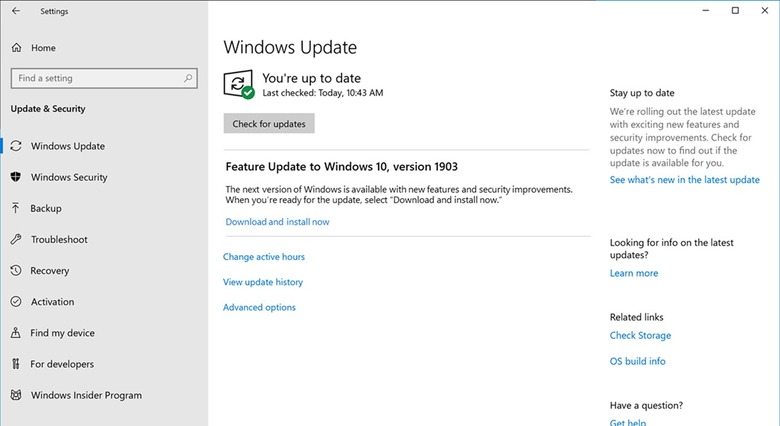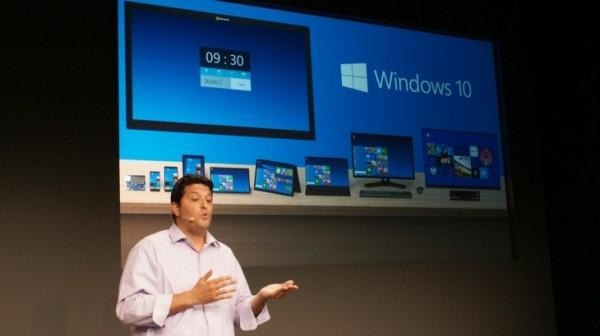How Microsoft can fix its Windows 10 Updates mess
Microsoft was mighty proud of its shift to a "Windows as a Service" strategy almost four years ago. It definitely has reason to boast, considering its history of painfully slow updates that came via the rare Service Pack. Redmond, however, seems to have swung to the other extreme in its desire to portray a company that can quickly respond to problems and feedback. Now it has to slow down and take stock of its obviously broken update process to ensure that what's left of Windows 10 credibility won't go down the drain.
From tortoise to cheetah
Windows, despite being the world's foremost desktop operating system, is notorious for its security holes. Microsoft's old process used the very strict and rigid waterfall software development paradigm that rigorously tested each and every change to the point that users were left open to bugs far longer than they should.
In the effort to adopt more modern paradigms and mindsets, Microsoft adopted a faster cycle for Windows 10. Mimicking the "as a Service" type of development, it would continually push out updates, presumably fixes, in a rolling cycle. But while it sped up the releases, insiders report that everything inside Microsoft remained mostly the same, including the development process. And when you instantly transform a slow-moving creature into a speed demon with no period of transition, you're bound to crash sooner or later. And in Microsoft's case, again and again.
Bugs-as-a-Service
While Microsoft did deliver on its promise of fast and timely Windows 10 updates, it also delivered a lot more. Every update, both the bi-annual major Feature updates down to cumulative patches would bring problems of their own, sometimes totally unrelated from the bugs they fix. This can range from breaking compatibility with some peripherals to, worse, disappearing files.
Windows does have its brave testers but, in many cases, they strangely don't hit those bugs during the testing period. Either that period is too short or there aren't enough testers, both of which require Microsoft to modify its release schedules and processes. To its credit, Microsoft does seem to be doing so but, like its switch to a rolling release system, it seems to have gone to the opposite extreme.

Changing constants
Some might point out how Windows 10 Home users are the ones most affected by these update bugs as Microsoft has practically turned them into beta testers for Enterprise customers. That may not be false but even those paying customers have their fair share of headaches from Redmond. In a sector that requires stability and consistency, Windows 10 for Business has delivered nothing but changes.
In the four years that Windows 10 has been in the market, Microsoft has changed the rules multiple times. And each and every change brings new rules, new periods, and new names that are incompatible with the previous release. And while change for the better is definitely a good thing, changing rapidly and inconsistently not only opens the door for errors, it also breeds doubt and uncertainty.
Agility, not haste
Microsoft defends its ever-changing policies as simply responding quickly to user feedback. This is pretty much the slogan of the agile method of development. That, however, is also an oversimplification. While agile espouses responding quickly, not every response requires changing quickly. Nor does it even dictate that every feedback has to be addressed at all.
Haste makes waste and that is true even in the fast-paced world of computer software. Even more so when that software is used by millions if not billions of computers around the world. Microsoft definitely deserves praise for turning over a new leaf and becoming a more responsive company but it may be ironically not listening to the biggest feedback of all: slow down.

Tick Tock
Microsoft is practically taking a break after Windows 10 1903, a.k.a. the 19H1 update. The next major update later this year will focus on polish and bug fixes rather than big features. That's definitely a reassuring change and something that is should probably adopt as its permanent strategy.
Most major platforms only have a release once a year. That includes macOS, iOS, and Android. Even most Linux distributions only have an annual cadence and Ubuntu is only able to pull off a bi-annual release thanks to having a stable Linux foundation and a vigorous and active open source community. Microsoft may have bitten off more than it can chew by adopting the same cycle without first testing if it can do so. It couldn't and it's time to make one last big change.
Wrap-up
Despite Android surpassing Windows in the number of Internet-connected devices, Microsoft's OS still remains the platform for the majority of the world's desktops and laptops, be it for consumers, for businesses, for schools, and even for governments. All the more reason for Microsoft to get its act together and clean up its mess of Windows 10 updates. It has already proven it can move fast. Now it has to prove it can slow down and be more consistent not just in policies but, more importantly, in quality.

